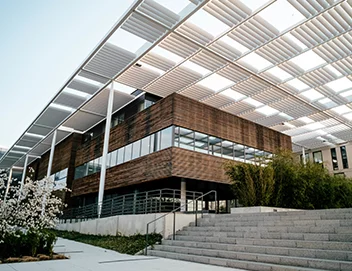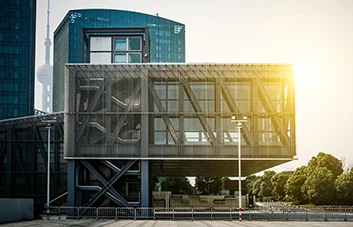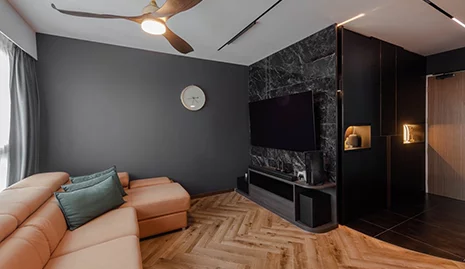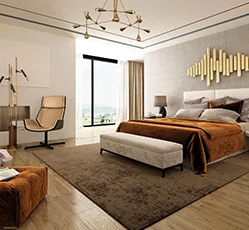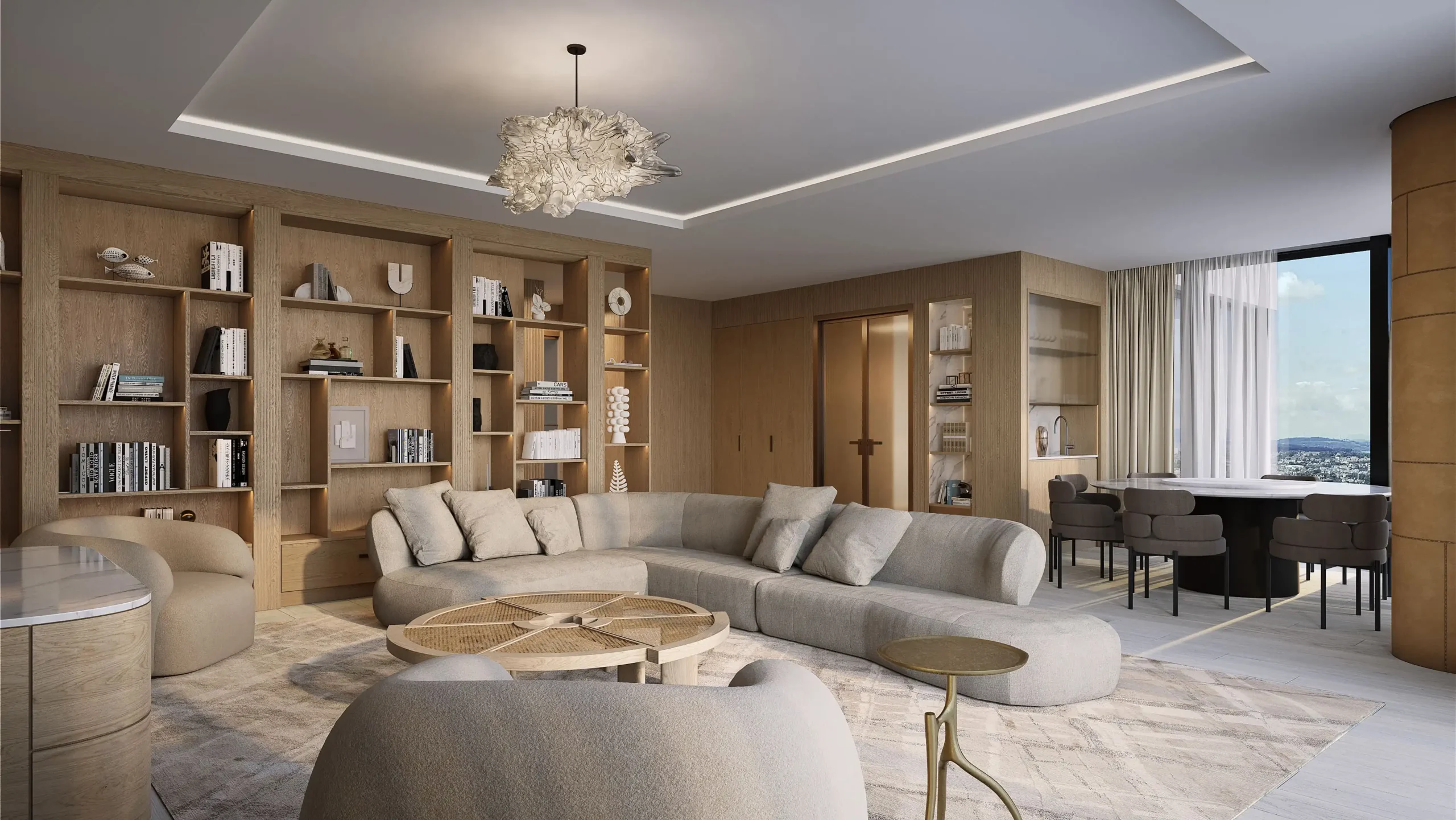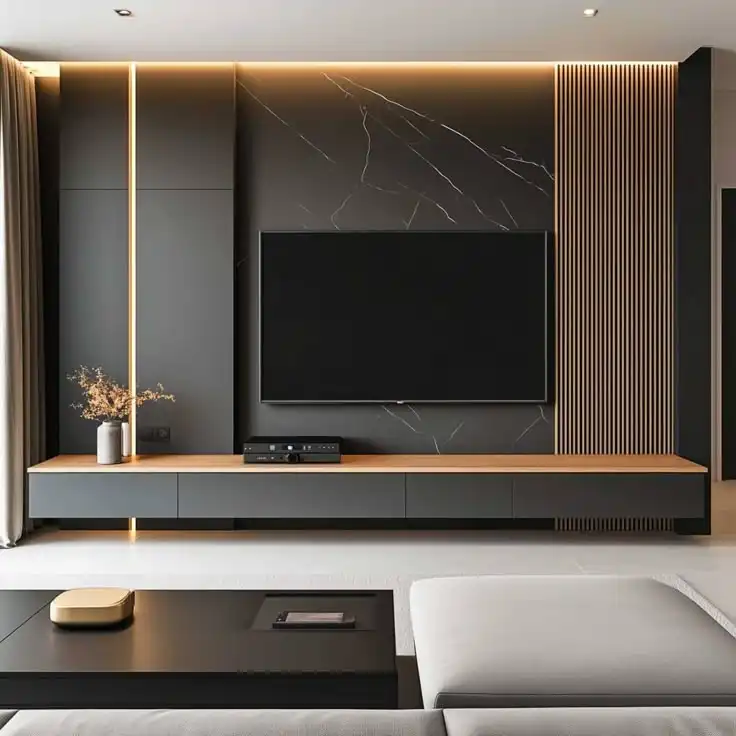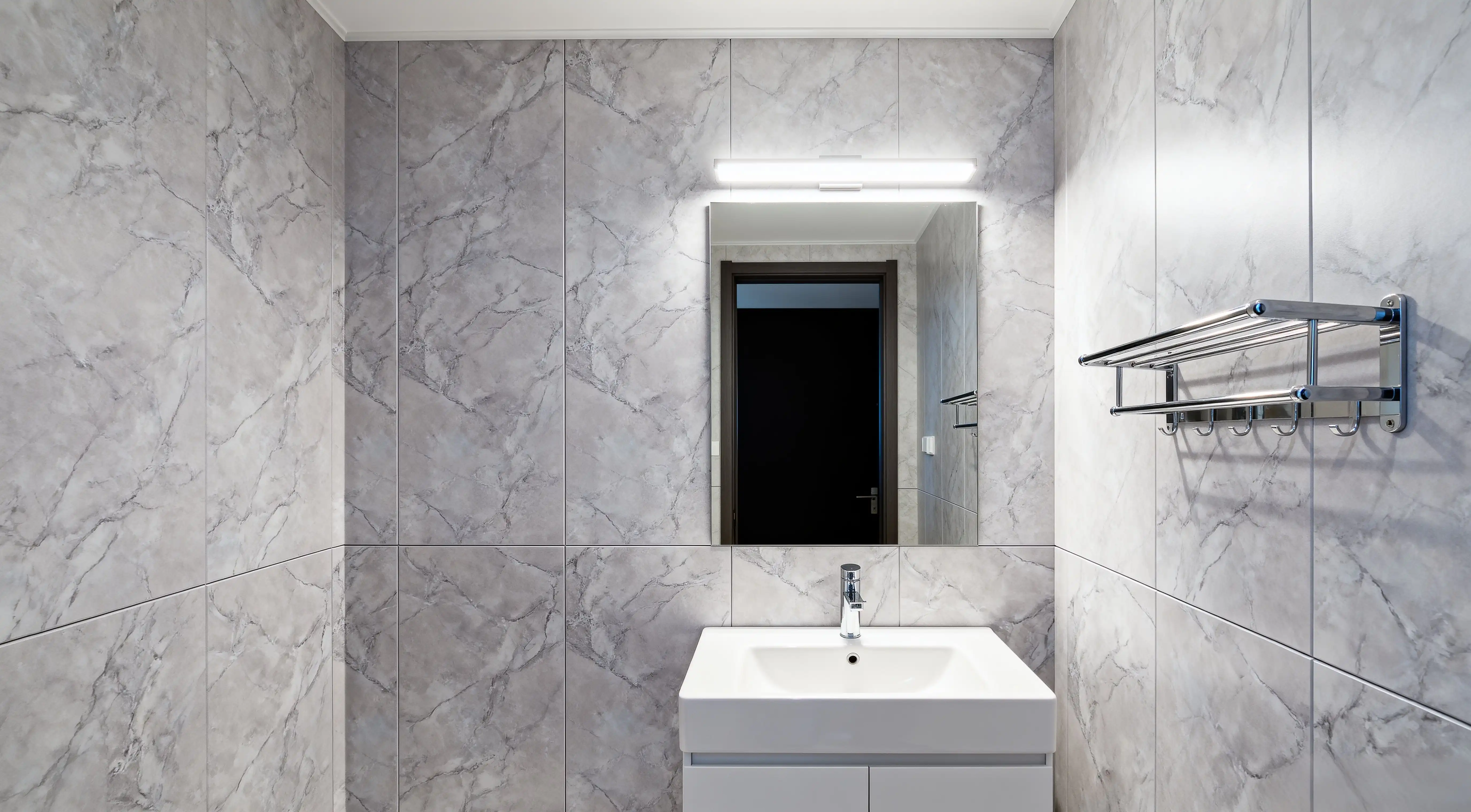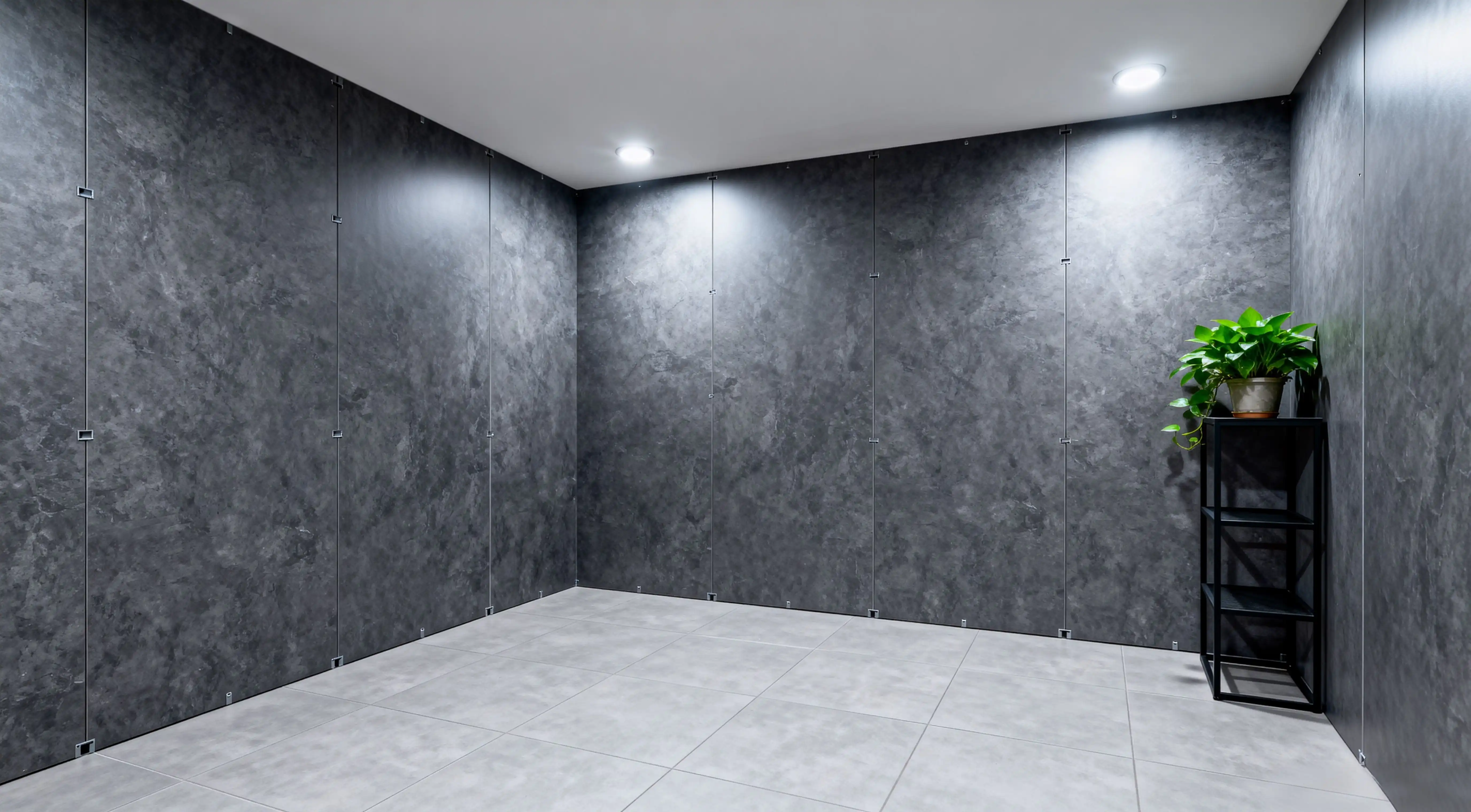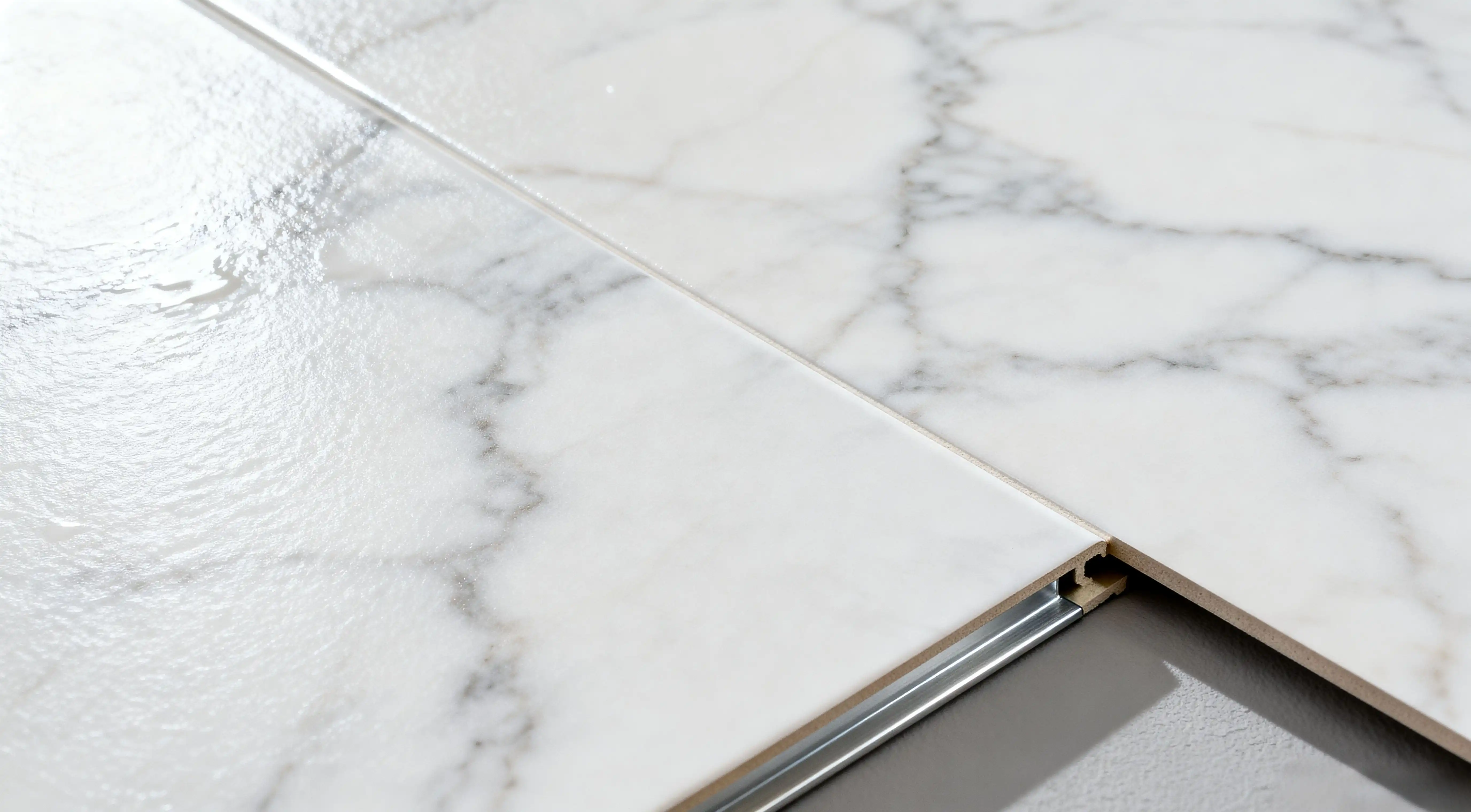PVC wall panels are revolutionizing home interiors, offering a blend of practicality and style that traditional materials struggle to match. As homeowners seek cost-effective, low-maintenance solutions for moisture-prone areas like bathrooms and kitchens, these synthetic panels have surged in popularity. Made from polyvinyl chloride, they resist water, mold, and daily wear while mimicking high-end finishes like tile or wood. But are they truly worth the investment?By the end, you’ll understand why PVC panels are becoming a staple in modern renovations—and whether they align with your project goals.
Articles connexes :
Why Are Wooden Interior Doors So Popular?
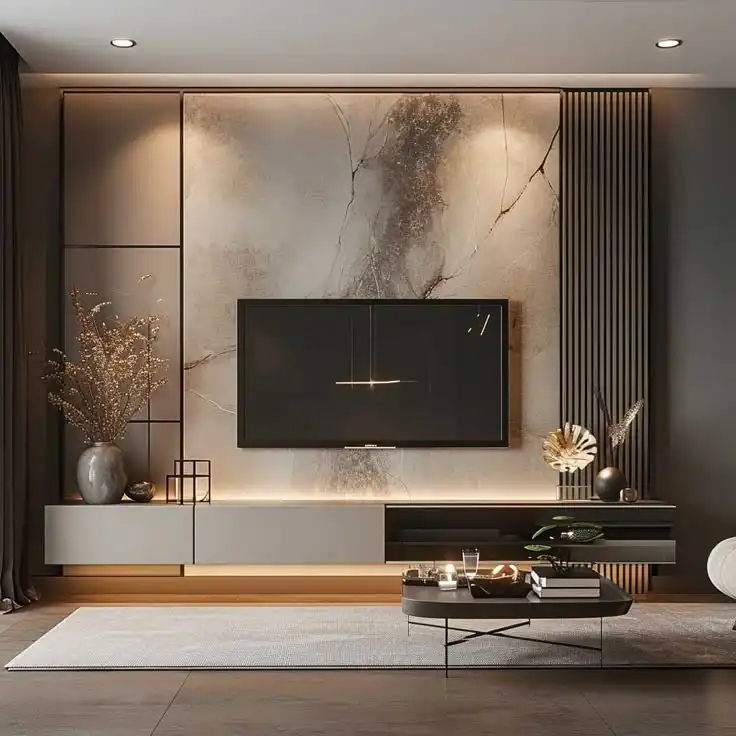
Why Are Homeowners Choosing PVC Wall Panels?
Homeowners increasingly favor PVC wall panels for their unmatched combination of functionality, affordability, and aesthetic flexibility. Unlike tile or paint, PVC addresses common pain points in home maintenance with innovative solutions.
- Waterproof and Mold-Resistant Properties: PVC panels create an impenetrable barrier against moisture, making them ideal for high-humidity zones. For example, in bathrooms, they prevent water seepage that causes wall rot, eliminating the need for grout sealing required with tiles. This reduces long-term costs and health risks from mold.
- Easy and Quick Installation: Most PVC panels feature interlocking systems or adhesive backing, allowing DIY installation in hours—not days. Unlike tiles, they don’t require specialized tools or drying time, cutting labor costs by up to 50%. Home renovators appreciate how panels can be installed directly over existing surfaces like damaged drywall.
- Low Maintenance and Cost-Effectiveness: With no need for painting, sealing, or scrubbing grout, PVC panels save time and money. A simple wipe with a damp cloth keeps them looking new for years. They’re 30–60% cheaper than ceramic tiles over a decade when factoring in installation and upkeep.
- Design Versatility: Available in wood, marble, or abstract patterns, PVC panels suit any décor. Brands like STYLEX offer UV-resistant finishes that won’t fade, while textured options replicate natural materials at a fraction of the cost.
How Durable and Safe Are PVC Wall Panels Over Time?
PVC wall panels boast impressive longevity and safety credentials, but their performance depends on quality and environment. When properly maintained, they can last 10–20 years without significant degradation.
- Long-Term Durability:
- Moisture and Impact Resistance: PVC won’t warp, crack, or corrode in damp conditions. Tests show panels withstand 100% humidity without damage, outperforming wood or MDF. Their flexibility also absorbs minor impacts, reducing dents.
- Resistance to Pests and Chemicals: Unlike organic materials, PVC is impervious to termites, fungi, and household cleaners. This makes it ideal for kitchens where spills are common.
- Temperature Tolerance: Most panels handle -20°C to 60°C (-4°F to 140°F), though extreme heat can make them brittle. Avoid installing near ovens or heaters.
- Safety Considerations:
- Fire Resistance: PVC panels are self-extinguishing and meet Class B fire ratings, slowing flame spread. However, they emit toxic fumes if burned—ensure compliance with local building codes.
- Non-Toxic and Low-VOC: Reputable brands like VevoBoard use lead-free, phthalate-free formulations with low volatile organic compounds (VOCs), making them safe for bedrooms and nurseries. Always check for GREENGUARD or CE certifications.
- Hygienic Surface: The non-porous finish inhibits bacterial growth, crucial for hospitals or kitchens.
Where Can You Use PVC Wall Panels Effectively?
PVC panels excel in areas where moisture resistance and easy cleaning are priorities, but their versatility extends to creative applications.
- High-Moisture Zones:
- Bathrooms and Showers: Perfect for walls and ceilings, PVC prevents mold and water damage. Use textured finishes for slip resistance.
- Kitchens and Backsplashes: Resistant to grease and stains, panels behind sinks or stoves simplify cleanup. Opt for glossy finishes to reflect light.
- Utility Spaces:
- Basements and Laundry Rooms: Protect against dampness and condensation in poorly ventilated areas.
- Garages and Workshops: Durable panels withstand knocks and chemical splashes.
- Commercial and Creative Applications:
- Retail Shops and Offices: Affordable, customizable panels create branded feature walls.
- Accent Walls and Ceilings: Use 3D designs in living rooms for modern flair. Lightweight panels won’t strain structures.
What Are the Main Disadvantages of PVC Wall Panels?
Despite their strengths, PVC panels have limitations that may deter some homeowners.
- Susceptibility to Physical Damage:
- Scratches or dents from sharp objects are hard to repair. Unlike tiles, damaged sections often require full-panel replacement.
- Thin panels (under 5mm) may flex or crack under heavy impact.
- Aesthetic and Environmental Drawbacks:
- Limited Authenticity: While designs mimic natural materials, PVC lacks the tactile feel of real wood or stone. Over time, repetitive patterns can look
- Environmental Impact: Production involves chlorine and fossil fuels, raising carbon footprint issues. Recycling options are limited—only 20% of PVC is reused globally. Some brands, like EcoDecor, now use recycled content.
- Thermal and Acoustic Issues:
- PVC offers minimal insulation, potentially increasing heating/cooling costs. In noisy rooms, add acoustic underlay.
- Expansion gaps are needed in temperature-fluctuating areas to prevent buckling.
How to Choose the Best PVC Wall Panel for Your Project?
Selecting the right PVC panel involves balancing aesthetics, function, and budget. Follow this step-by-step guide:
- Assess Key Specifications:
- Thickness: Choose 5–8mm for walls (thinner for ceilings). Thicker panels resist dents better.
- Material Grade: Food-safe PVC (FDA-approved) for kitchens; fire-rated for commercial use.
- Surface Texture: Matte finishes hide scratches; gloss adds brightness to small spaces.
- Match Design to Function:
- For bathrooms, select moisture-resistant designs with anti-slip textures.
- In living areas, opt for wood-look panels with warm tones to create coziness.
- Budget and Brand Selection:
- Budget-friendly: Brands like Prowell (from $2/sq ft).
- Premium: STYLEX or VevoBoard ($5–8/sq ft) for enhanced durability.
- Always request samples to check color accuracy and texture.
- Installation Readiness:
- Measure walls precisely, adding 10% extra for cuts.
- Ensure surfaces are flat—use leveling compound if needed.
Should You Invest in PVC Wall Panels?
Deciding whether PVC panels are worth it hinges on your specific needs, budget, and values.
- Cost-Benefit Analysis:
- Pros: Save 40% on installation vs. tiles; near-zero maintenance costs. Ideal for rentals or quick flips.
- Cons: Higher upfront cost than paint; may not boost resale value like natural materials.
- Comparison to Alternatives:
- Tiles: PVC wins on ease of install and moisture resistance but lacks tile’s premium feel.
- Paint/Wallpaper: More durable in wet areas, though less customizable.
- Ideal Use Cases:
- Invest if: You need a fast, waterproof solution for bathrooms, kitchens, or basements.
- Avoid if: Sustainability is a top priority, or you desire authentic natural textures.
Conclusion
PVC wall panels deliver compelling advantages for modern homes: unbeatable moisture resistance, effortless maintenance, and stylish versatility. While they can’t replicate the luxury of natural stone or address all environmental concerns, their practicality in bathrooms, kitchens, and basements makes them a savvy investment for busy homeowners. By selecting high-quality panels and understanding their limitations, you can transform problem areas into durable, attractive spaces. As innovation improves eco-credentials and designs, PVC’s role in home design is only set to grow—proving that sometimes, synthetic solutions outshine tradition.

